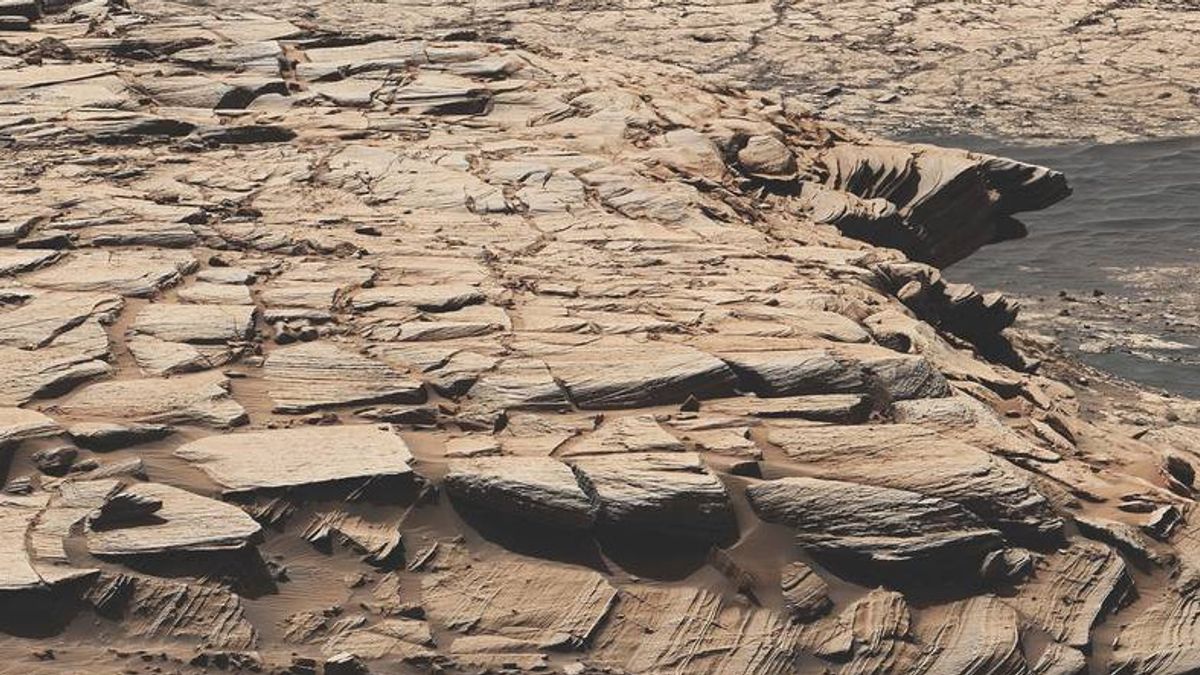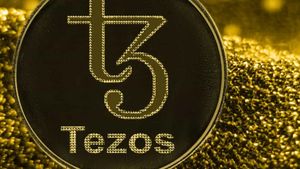
JAKARTA - For nearly a decade, NASA's rover, Curiosity, has finally found signs of life on Mars by revealing the presence of carbon on the planet.
With the carbon footprint, this determines as well as the possibility of ancient life on the Red Planet, and Mars could be a habitable planet.
Carbon is the basic sign for all life on Earth, and the carbon cycle is the natural process of recycling carbon atoms. On Earth, carbon atoms are processed through cycles as they travel from the atmosphere to the ground and back into the atmosphere.
Most of Earth's carbon is found in rocks and sediments, the rest in the oceans, atmosphere, and global organisms. That's why the carbon atom with its recycling cycle is a tracer of biological activity on Earth.
So the carbon on Mars could be used to help researchers determine if life existed on ancient Mars. Learning more about the origins of this newly detected Martian carbon could also reveal the processes of the carbon cycle on Mars.
"We're finding things on Mars that are very interesting, but we really need more evidence to say we've identified life. So we're figuring out what else could be causing the carbon signature we're seeing, if not life." principal investigator of the Laboratory for Chemical Analysis of Samples on Mars (SAM), Paul Mahaffy.
In their report on their findings published in the journal Proceedings of the National Academy of Sciences, Curiosity scientists describe some of the unusual carbon signals they detected.
Their hypothesis draws in part from the carbon signature on Earth, but scientists warn the two planets Mars and Earth are so different that they cannot make definitive conclusions based on examples on Earth.
To analyze the carbon on the Martian surface, the scientists used the Tunable Laser Spectrometer (TLS) instrument in the SAM lab. SAM heated 24 samples from geologically diverse locations in Mars' Gale crater to about 1,500 degrees Fahrenheit, or 850 degrees Celsius, to release the gases inside.
Then TLS measures the isotopes of some of the reduced carbon released in the heating process. Isotopes are atoms of an element with different masses due to different numbers of neutrons, and they play a role in understanding chemical evolution as well as planetary biology.
Curiosity scientists found that nearly half of their sample had a very large amount of carbon 12 compared to what had been measured in the Martian atmosphere and meteorites. These samples came from five different locations in the Gale crater.
"On Earth, the process that will produce the carbon signal we detect on Mars is a biological process. We have to understand whether the same explanation applies to Mars, or if there is another explanation, because Mars is very different," said Curiosity scientist Christopher House.
House added that Mars is quite unique in that it may have started with a different mixture of carbon isotopes from Earth 4.5 billion years ago. Mars is smaller, cooler, has weaker gravity, and has different gases in its atmosphere. In addition, carbon on Mars can run without involving life.
Currently, scientists are in the early stages of understanding how carbon cycles on Mars and, as such, how to interpret isotope ratios and the nonbiological activity that can cause those ratios.
Curiosity, which arrived on the Red Planet in 2012, is the first rover with a tool to study carbon isotopes on the surface. Other missions have gathered information about isotopic signatures in the atmosphere, and scientists have measured the ratio of Martian meteorites to those that have collected on Earth.
Defining the carbon cycle on Mars is absolutely key to trying to understand how life fit into that cycle. Meanwhile, Curiosity scientists will continue to measure carbon isotopes to see if they get the same signature when the rover visits other sites that are thought to have well-preserved ancient surfaces.
The English, Chinese, Japanese, Arabic, and French versions are automatically generated by the AI. So there may still be inaccuracies in translating, please always see Indonesian as our main language. (system supported by DigitalSiber.id)









